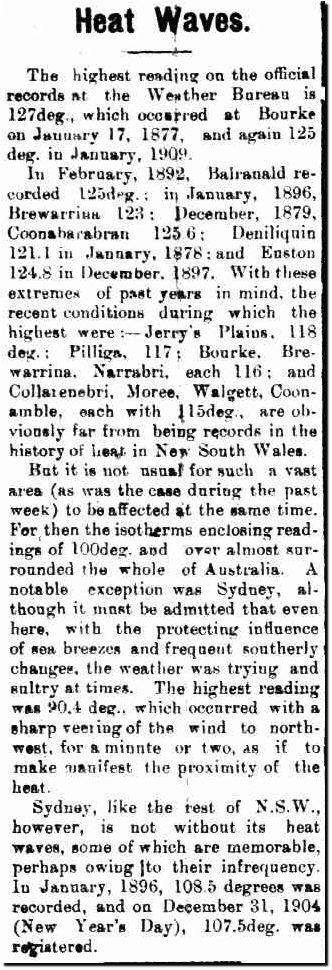“Heat Waves.
The highest reading on the official records at the Weather Bureau is 127 deg., which occurred at Bourke on January 17, 1877, and again 125 deg. in January, 1909.
In February, 1892, Balranald recorded 125deg. ; in January, 1896, Brewarrina 123: December, 1879, Coonabarabran 125.6 ; Deniliquin 121.1 in January, 1878 ; and Enston 124.8 in December. 1897. With these extremes of past years in mind, the recent conditions during which the highest were : — Jerry’s Plains, 118 deg. ; Pilliga, 117 Bourke, Brewarrina, Narrabri, each 116; and Collarenebri, Moree, Walgett, Coonamble, each with 1l5deg., are obviously far from being records in the history of heat in New South Wales. But it is not usual for such a vast area (as was the case during the past week) to be affected at the same time. For then the isotherms enclosing readings of 100deg. and over almost surrounded the whole of Australia. A notable exception was Sydney, although it must be admitted that even here, with the protecting influence of sea breezes and frequent southerly changes, the weather was trying and sultry at times. The highest reading was 90.4 deg., which occurred with a sharp veering of the wind to north-west, for a minute or two, as if to make manifest the proximity of the heat. Sydney, like the rest of N.S.W., however, is not without its heat waves, some of which are memorable, perhaps owing to their infrequency. In January, 1896, 108.5 degrees was recorded, and on December 31, 1904 (New Year’s Day), 107.5deg. was registered.”

10 Dec 1913 – Heat Waves. – Trove
h/t John B

